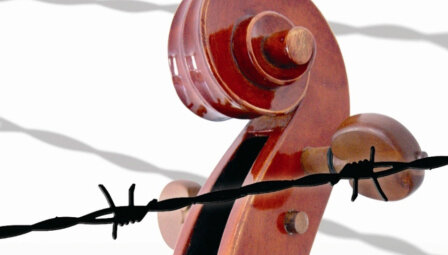“I believe that the spirit of this “lost generation” now needs to be heard. The creativity of the first half of the twentieth century is far richer and varied than we commonly assume. […] The cliché “there are no lost masterpieces” reveals our own ignorance. […] Our perspectives on the history of twentieth-century classical music are incomplete because an enormous quantity of works has remained unplayed, and the lives of its composers largely ignored.”
James Conlon (photo Bonnie Perkinson)
the orel foundation
The OREL Foundation in Los Angeles was founded by conductor James Conlon. Their objectives are similar to those of the Leo Smit Stichting. Their website gives extensive information on 24 suppressed composers and their music. Internationally renowned researchers contribute to the site with dozens of essays on this subject. The Leo Smit Stichting collaborates with The OREL Foundation on a regular basis, for example in promoting Paul Hermann and his music.
Zentrum für verfemte musik
In January 2008, at the Hochschule für Musik und Theater Rostock a centre for banned music was opened. Their archives contain over 700 works and documents of suppressed composers. The centre organises festivals, exhibitions and concerts. In a biannual competition, young ensembles perform music by suppressed composers. Eleonore Pameijer, artistic leader of the Leo Smit Stichting, teaches in masterclasses and is a member of the jury in the competition. The Leo Smit Stichting closely collaborates with Volker Ahmels, director of the Zentrum für Verfemte Musik in Rostock/Schwerin.
musica reanimata
The German association musica reanimata researches the life and work of composers persecuted by the Nazi’s. The association organises concerts and publishes articles and books. Their website contains short biographies of dozens of composers. The Leo Smit Stichting collaborates with the Berlin based organisation on a regular basis. Dutch suppressed composers have been the subject of the socalled ‘Gesprächskonzerte’ broadcast on Deutschlandfunk.
Forbidden music
Michael Haas writes a fascinating blog titled Forbidden Music. The blog was launched when his book Forbidden Music; The Jewish composers banned by the Nazis was published, but is still growing with very interesting discoveries and articles.
“ The Leo Smit Foundation, publication of Vervolgde Componisten in Nederland and Et’cetera’s ten-CD box together form a profoundly disturbing testimony. There is not a single CD that cannot be heard and enjoyed from beginning to end and confirms that this is not solely to be thought of as music of the Holocaust, but should be performed as music that speaks universally and needs to be heard beyond the context of Nazi persecution.”
Michael Haas (photo: Florian Hammer)
Exhibition at the Exil.Arte Zentrum in Vienna
wenn ich komponiere, bin ich wieder in wien
In this exhibition curated by the colleagues of Exil.Arte in Vienna, visitors learn about composers who had to leave everything behind. Gerold Gruber and Michael Haas are the driving forces behind the Exil.Arte Zentrum, a knowlede and documentation centre on composers who had to flee Austria after the ‘Anschluss’ in 1938. The centre organises exhibitions and concerts and maintains an online database. The Leo Smit Stichting collaborates with Exil.Arte on a regular basis.
music of remembrance
In 1998, pianist Mina Miller founded Music of Remembrance in Seattle to let music tell stories about the Holocaust. Since the start, Mina organised dozens of concerts and music of Dutch suppressed composers is featured regularly with the help of the Leo Smit Stichting. Music of Remembrance asked Donald Byrd to write a new choreography for Dick Kattenburg’s Tap Dance.
“Watching a rehearsal of Donald Byrd’s new “Tap Dance” is like eavesdropping on a class in Morse code. “Dada, dada, dadadadada,” Byrd calls out as dancer Shadou Mintone listens intently, then tries to duplicate the beats in her tap shoes. [...] “The challenge comes because the rhythms are written out, and you have to follow them,” Byrd says, “but the steps aren’t notated. But it’s fun, turning the dancer into an instrument.”
Jascha Nemtsov (photo: Rut Sigurdardóttir)
musica judaica
On his website Musica Judaica, pianist Jascha Nemtsov presents his research on composers of the Russian ‘New Jewish School’, like Joseph Achron, Michael Gnesin en Alexander and Grigori Krein. Jascha performed more than once in the Uilenburg Concert Series of the Leo Smit Stichting, for example with the Preludes by Vsevolod Zaderatsky.
Let forbidden music sound again
In the Second World War, many composers were silenced because of their Jewish descent or their resistance. Their music was forbidden. The Leo Smit Stichting carries out research, tells composers' stories, makes sheet music available and performs forgotten music. Together with musicians, programmers, researchers and listeners we give composers their rightful place in music history.
© 2025 Leo Smit Foundation. Design by VisualAffairs.nl










